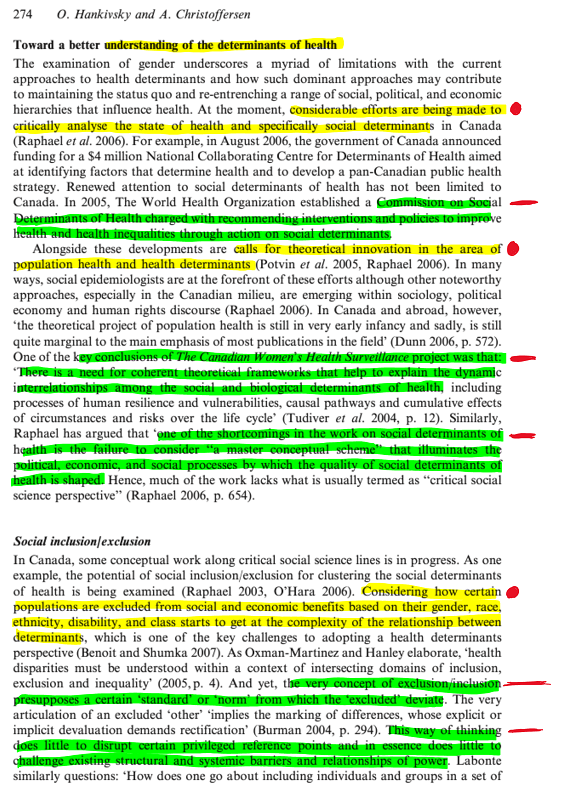This method involves marking main ideas and supporting details as you read and returning to these sentences later to turn them into notes.
Advantages
-
Does not interrupt the flow of reading
-
Useful if there are minimal sections or headings in your reading
-
Fast method of reading
Disadvantages
-
Requires re-organizing and consolidating information after the reading
-
There is less analysis in this method and more capturing of factual information. You can combat this by including a summary at the end of your notes.
Steps
-
While reading, put a dot next to a main idea (usually this is found in the first 1-2 sentences of a paragraph or first few sentences in a section). This method can be adapted to highlighting the main idea with a particular colour (i.e. yellow).
-
While reading, put a dash next to supporting information for the main idea you identified. This method can be adapted to highlighting supporting points/evidence with a particular colour (i.e. green).
-
Continue to mark main ideas with dots and supporting points/evidence with dashes until you finish the reading.
-
When you finish your reading, go through the dots and dashes and organize this information into notes. The outline method lends itself well to this.
-
Once you have gathered and organized your information, try to summarize the key concepts or take-aways from your notes.
Example

Image Description: picture of a journal article with yellow and green highlighted sentences. Red pen marks of a long dash or a dot are indicated beside the sentences, illustrating the Morse Code method.